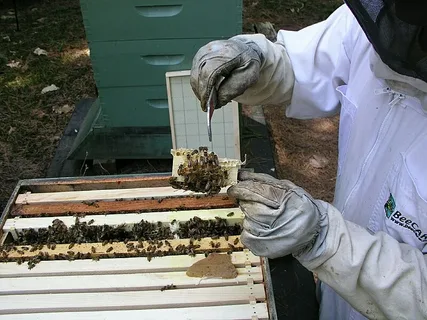Checking Your Beehive for Signs of Life: Tips for Beginners
As a beginner beekeeper, one of the most important skills to develop is learning how to check your beehive for signs of life. Regular hive inspections not only help you maintain a thriving colony but also prevent potential problems from escalating. Wearing the best beekeeping suits and beekeeping trousers is essential for your safety during these checks, ensuring you stay protected while working closely with your bees. In this guide, we’ll walk you through the essential signs of a healthy hive, warning indicators of trouble, and how to use proper techniques for effective hive management.
Why Regular Hive Checks Are Crucial
Why Check for Beehive Activity?
Bees are resilient creatures, but even the healthiest colonies can fall victim to disease, pests, or environmental stress. By routinely checking for signs of life, you can catch issues early before they spiral out of control. Whether it’s ensuring the queen is laying eggs or spotting an early infestation of Varroa mites, consistent hive checks allow you to act swiftly, keeping your bees healthy and productive.
Failing to inspect your hive regularly can lead to weakened colonies, decreased honey production, or even total colony collapse. By investing time in thorough inspections, you’re protecting your investment and supporting the broader ecosystem.
Key Signs of a Healthy Beehive
Healthy Beehive Signs to Look For
Knowing what a healthy hive looks like will make your inspections easier. Here are some key indicators:
- Active bee traffic at the entrance, with bees coming and going frequently.
- Bees bringing in pollen, often visible on their hind legs, which is a sign of a thriving foraging workforce.
- A steady buzzing sound that suggests a vibrant and busy colony.
- The presence of brood (eggs, larvae, and pupae), indicating that the queen is actively laying and the colony is reproducing.
When you see these signs, it’s a good indication that your bees are happy and healthy. Regularly observing these behaviors will help you detect when something is off.
Warning Signs to Watch Out For
Beehive Problems to Detect Early
Not all hive inspections will reveal good news. Be on the lookout for these warning signs:
- Silence or reduced activity at the entrance, which could indicate a dead or weakened colony.
- Pests such as Varroa mites, wax moths, or small hive beetles invading the hive.
- Discolored or spotty brood patterns, which could suggest disease or poor queen performance.
- A foul odor or signs of mold, both of which are indicators of a moisture problem or disease.
Early detection of these issues can save your colony. If you spot something unusual, act immediately by consulting a more experienced beekeeper or doing further research.
Tools and Techniques for Hive Inspections
Beekeeping Inspection Tools You’ll Need
Having the right tools can make your hive inspections safer and more efficient:
- Smoker: Calms the bees and makes them easier to work with.
- Hive tool: Helps you separate and lift frames.
- Bee brush: Gently removes bees from frames for closer inspection.
When opening your hive, move slowly and deliberately. Avoid sudden movements to minimize stress on the bees. Gently lift each frame, checking for brood patterns, honey stores, and any signs of pests or disease. Remember, your goal is to disturb the colony as little as possible while gathering critical information.
Seasonal Considerations for Beehive Checks
Seasonal Beehive Checks: What to Watch For
Beehive inspections vary by season. In spring and summer, you’ll focus on ensuring strong brood production and abundant honey stores. In the fall, your priority shifts to preparing the hive for winter by checking food reserves and overall colony strength.
Winter inspections are different—you’ll mainly check for signs of life from outside the hive, such as listening for buzzing or watching for bees flying on warmer days. Regular seasonal checks help you adjust your management practices to keep your bees thriving year-round.
Recordkeeping for Long-Term Hive Health
Why Keeping Hive Inspection Records Matters
Maintaining a detailed log of your hive inspections is crucial for long-term success. Record observations such as brood patterns, honey production, and any signs of pests or disease. This helps you track changes over time and make informed decisions about hive management.
You can use a simple notebook or a beekeeping app to keep track of your inspections. Over time, these records will help you identify patterns and anticipate problems before they become serious.
Conclusion
Checking your beehive for signs of life is a fundamental part of beekeeping. By learning to recognize healthy behaviors, identifying early warning signs, and using the right beekeeping tools and accessories, you’ll ensure your colony stays strong and productive. Remember, regular inspections and diligent recordkeeping are your best defenses against hive issues.
As a beginner, staying proactive and observant will set you on the path to becoming a successful beekeeper. Your bees will thank you with a flourishing hive and a bountiful honey harvest.




